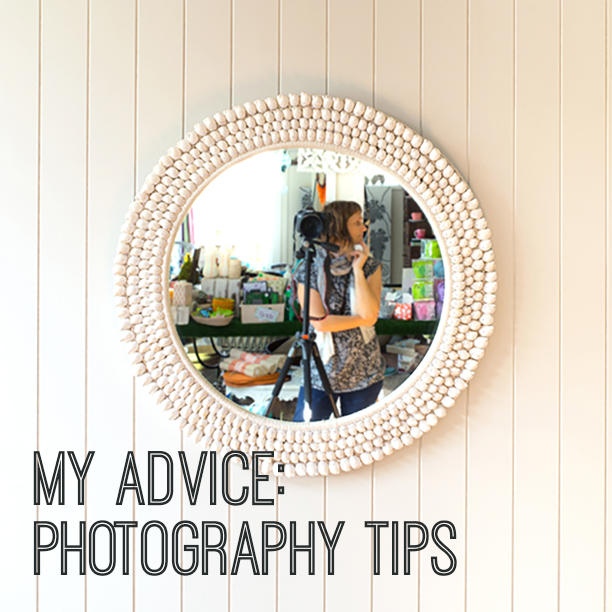Art commissions: basic tips
As an artist, in addition to creating work for exhibitions and your own projects, you may often be commissioned by businesses or individuals to make something just for them. Whether it is a piece of fine art, a mural, or a digital illustration, a commission gives you an opportunity to practice your skills, create new work, and reach new audiences.
Unfortunately, misunderstandings can sometimes come up along the way that cost you time and impact your client’s satisfaction. I’ve found that most problems arise from a lack of clarity in communication, and from not being on the same page about the expected result, timeline, or cost of the piece. Many clients will have never commissioned an artist before and may know little about art and the creative process, and it’s essential to keep that in mind.
Here are a few basic things to remember while doing an art commission to avoid most issues.
Always start with a brief No matter how simple or straightforward the project, always develop a basic brief at the start. Talk to your client about what she wants from the art piece and what role it will fulfil in her home or business.
Assess the client’s expectations When someone commissions you for the first time, talk to her extensively about what she expects from the art piece. Be skeptical of people who tell you that they have no expectations and that you can do anything you like. Usually, clients have seen a particular style of art that you do and want something similar. Show them pieces of your work and discuss what they like the most.
Get a deposit before you start sketching A lot of people will ask to see ideas or sketches on the piece before they commit to working with you. However, they should be able to decide whether you are a good fit for their project based on your portfolio and past experience, without asking you to work for free. It can be frustrating if you spend a long time working on a design only to have a potential client cancel the project. Before you do any creative work, get them to pay a small percentage of the quote as a financial commitment.
Show your client a sketch before you start the piece Once the client has paid a deposit, get approval of a basic design before you start the piece. This can be as simple as a rough sketch or as detailed as a presentation with colour palette, mood boards, and finalised drawings. The important thing is to agree on the main elements of your piece before you spend a lot of effort on it. If the client is unhappy with the final result, you can refer back to this stage to justify your choices.
Don’t rely on words when talking about art The people commissioning you will rarely be artists, so you need to illustrate what they mean when using creative terms. When they use words such as “abstract” or “modern” to describe their preferences, ask for examples of what they mean. Similarly, when you describe your ideas, don’t trust that they’ll understand your description: show them. This will ensure everyone is on the same page.
Keep them updated on progress This doesn’t mean you have to regularly send photos of the piece, but make an effort to keep your client posted on how it’s coming along and when you plan to finish. If you are running behind schedule, be honest about it.
Don’t forget to document your work Get good photos or videos of each piece you create. A solid portfolio is the best way to quickly convey to future clients the type of work you do and what they can expect from you.
Júlia Both is a Brazilian artist based in Melbourne. Her work explores duality and the relationships between the macro and microcosmos, inspired by plants, nebulae, sex, and dreams. For more about Júlia’s work, visit her at artofboth.com or follow her on Instagram (@artofboth).
Taking a leap: going out on your own
I always wanted to be an artist. As a teenager, I had romantic notions of living in a studio surrounded by canvases, paint, red wine, and cigarettes while I suffered for my art. I lived this dream for a while when I moved out of home and undertook a Fine Art/Visual Arts degree straight out of high school. I rushed through my early foundation classes in sculpture and silver-smithing, awaiting my longed-for painting instruction. Alas, after undertaking my foundation course in painting I realised that my love of arts and passion for creating weren't enough. I was surrounded by amazing artists, I was invisible to my lecturer, and my work was far below my expectations. I hadn't learnt yet that comparison is the death of joy. I didn't know not to compare my "chapter one" to someone else's chapter twenty. I just felt a sense of failure and fear. And as a seventeen-year-old living in a world of adults, I assumed the answer was to drop out.
I’m so pleased that a friend and fellow student talked me out of such ideas, so pleased that I stuck it out. I fell in love with and majored in my next foundation area: intermedia (a mixed-media approach to fine art). Here I learnt how to become an artist: how to question, see, experiment. I was given free rein over photography equipment and a darkroom. I learnt early Photoshop and built a website, created sculptures and installations, journaled, and exhibited my work. I still didn't know what I was going to “do” when I grew up, but I trusted that I would work it out.
To complete my degree, I needed to tick off two final classes. My financial situation had changed by this point, and studying silver-smithing became a viable option. It seemed like an enjoyable way to meet the requirements of the degree. After three years at Uni, these last two classes actually decided my future, for it was here that I found my medium and decided to become a jeweller. I fell in love with the rigidity and flexibility of metal. I was enthralled with the techniques and history of the practice. It was sculpture in miniature, designed to be worn. It was craft, art, and a trade. The day after I graduated I started applying for jewellery apprenticeships. I wanted to be a “real” jeweller, with a secure, guaranteed income as I learnt the craft, and the ability to create work and exhibit in my own time.
Finding an apprenticeship is no easy task. I spent the next several years working in jewellery stores as a sales assistant, getting whatever time and training I could at the jewellery bench and learning anything else I could in the process—from pearl threading to Diamond grading, gem identification to antique hall marks. I learnt sales strategies, stocktake, and stock and package ordering. I met suppliers and went to industry launches and trade fairs. I took a twelve-month jeweller vocation course at the Goldsmith school. I worked with several jewellers and finally started an apprenticeship, only to lose it when the business ran out of capital. After all this time, effort, and learning, I still wasn’t a real jeweller.
By the time I took maternity leave with my first child, I was so burnt out on the jewellery industry that I settled in to being a stay-at-home mum and didn’t touch the tools in my workshop for more than eighteen months. Eventually, I made a silver pendant as a gift for a friend. Then I made my sister a pair of earrings. Online sales platforms like Etsy and Madeit were taking off and friends suggested I sell my jewellery online. So I did, as a hobby.
With hindsight, I can join the dots, but at the time I couldn’t see the forest for the trees. The thought of starting my own business hadn’t occurred to me. I thought I would return to the workforce as a jewellery sales assistant and keep trying to get an apprenticeship, chasing the elusive dream of becoming a “jeweller.” I thought receiving my apprentice certificate would remove the imposture syndrome I felt. But as I kept making and selling my jewellery, I realised that the certificate was only important to me. When people brought my pieces, they didn’t ask if I was a “real” jeweller, self-taught, or a bit of both.
Change came rushing in after listening to Clare Bowditch speak at a Big-hearted Business morning tea. I had begun tossing up the possibility of selling my wares at a local craft market in a school hall, still with a hobby mindset. Clare encouraged us to get out pens and paper and write down where we wanted to be in five years’ time. For the first time, it clicked that in five years’ time I could still have a hobby—or I could own my own business. I decided to apply for that craft market! After the event I chatted with creative business owners and shared my revelation. They were pleased, but offered another revelation: don’t aim small. Find the best market around for what you want to sell, and apply for it. That day, a fire was lit inside me that still hasn’t gone out.
My hobby became a business the moment I decided to treat it like a business. I had to embrace fear and question my belief that I wasn’t the sort of person who could own a business. I applied for the Brisbane Finders Keepers market and spent the next couple months making stock and learning everything I could about business. I launched Christina Lowry Designs in November 2013 at Finder Keepers.
Now in my fourth year in business, I consider myself not only a “jeweller,” but a designer, mentor, and businesswoman. Everything I have learnt, from my fine arts degree to my sales work, has been incorporated into Christina Lowry Designs. I define my own work life balance. My family is my priority. My passion and drive continues. I believe in lifelong learning. I read, listen to podcasts, collaborate with other creatives, and take courses. And every day, I am so glad I took the leap and went out on my own.
Photos by Trudi Le Brese Photography for Christina Lowry Designs
Christina Lowry is a designer and jeweller who makes fine jewellery for creatives. Her work is featured in several Australian galleries, as well as in her online store. Christina fell in love with jewellery making while studying a Bachelor of Fine Art/Visual Art. Each piece is lovingly made by hand in her Brisbane workshop, incorporating precious metals and gemstones, using traditional metalworking techniques.
My Advice: Growth tips for Instagram
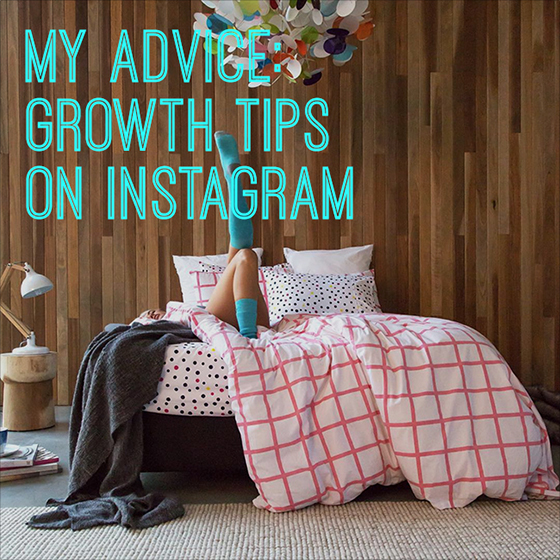 By Andrea McArthur
By Andrea McArthur
Three prolific Instagrammers share their tried and tested tips for growing your brand on Instagram…
Petrina Turner, Designer. Stylist. Maker. Dreamer. Do-er. Petrina Turner Design www.petrinaturnerdesign.com.au // Instagram @petrinaturnerdesign // Followers 21.7k
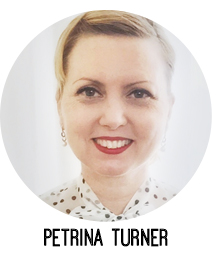
I don’t think it’s any secret amongst those who know me that I love Instagram. As a designer, stylist and maker I am definitely a visual person and Instagram is the perfect medium for me to use as a visual diary to capture inspiration and beauty on a daily basis. And if you really look there is beauty everywhere.
My biggest piece of advice to anyone wanting to grow their network on Instagram is to be authentic. I post about the things that speak to me, and share the things I love. I never really set out to build a profile on Instagram, I just wanted to capture the beauty and my following happened quite organically. As a small business owner I found it a place of incredible inspiration, a place where at any time of the day or night I was connecting with like minds and creative souls. And my tribe grew… and grew… and grew.
I don’t really use it as a marketing tool by design. I think that by sharing what I see, and how I see it, it gives people an insight into how I work and my style. I really love my work as a designer so of course I am often sharing my work, or snippets of it. So I guess in that sense my Instagram account is an extension of my portfolio. I think what I’m really doing is taking people on my journey with me, and that resonates.
And I like the interaction with people that Instagram gives me. More than the number of followers what has really been the greatest gift from Instagram are the genuine connections I have made through it. It has led to inspiration, collaboration, PR and most importantly wonderful friendships. I try as much as possible to respond to the comments left on my images. With the amount I sometimes get I don’t always manage to respond to every single one, but I can assure you that I read and appreciate them all.
So find your true voice and share it. People will listen if it comes from your heart.
Jessica Viscarde, Creative Director Eclectic Creative www.eclecticcreative.com.au // Instagram @jess_eclecticcreative// Followers 17.7k
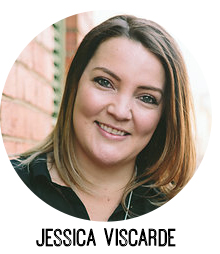
Tell your story I have always treated instagram as a visual diary and a story-telling tool that has documented my own work and a means of engaging with other likeminded individuals. I really believe that there is a market out there for absolutely anything and everything; you just need to find your people. And you find your people by simply just being yourself. Instagram is a powerful platform for reflecting your style, establishing your unique identity and showing off your creative flair. Everyone has a story that needs to be shared as we all have something to offer and can all learn something from it, so make sure you tell your own story through your visuals.
I started my own hashtag #pocketofmyhome long before anyone was really using them as a means of creating communities or connecting with others. I wanted a place where people could go and celebrate their own homes, not just the ones found in glossy magazines. I wanted to celebrate real homes with personality and create a little space for everyone to go and share their home pictures. Without much promotion at all or having to annoy people with too many competition spam, #pocketofmyhome now boasts close to 25K images from users all over the world! I love hearing that people have connected and become friends through the tag – what a fabulous community!
Be consistent Consistency is the magical, glittery goodness that in my opinion binds everything together and creates a visually stimulating and effective instagram. Consistency can come from using a similar theme/filter or colour way through your imagery, only sharing images from a particular genre (such as travel, interiors, food etc) or working out a mixture of everything but delivered in a consistent way, maybe posting time or your written style.
Consistency gives your followers a feeling of familiarity and builds trust and assures them the style of imagery they will see when they scroll down to your feed. My imagery is all mine, created by myself and our contributors and includes behind the scenes shots, images of my own home and even features my little rescue cat, Peg… as I want to tell my story and part of that is I love cats!
Quality + crediting Instagram is visual so make sure your images are of excellent quality so people actually want to see them and like them. This means no pixelation or blurred images, no selfies in the bathroom or toilet and if you are using apps to edit or reframe your images, pay the extra couple of bucks to have their ads or text removed! I also prefer to share my own work so my followers can get an authentic sense of the work I can create and deliver and who I see whom I collaborate with… In the rare occasion I regram an image, I make sure I credit where credit is due. Make sure you mention the account, not just tag them in (as so many people don’t see the tags) and ensure the credit/mention is in the first line of your message. And don’t forget to credit the photographers, they always get missed out. Just do the right thing and share the love… correctly!
Engage with your followers Lastly, engage with your followers, talk to them, and get to know them, let them get to know you. You’d be surprised whom you meet on instagram and can connect with. I have an amazing amount of support and have spoken with so many gorgeous people all just doing their own thing. Many of my collaborations have come from connections made on instagram so talk to people; you never know where it may lead.
Madeleine Dore, Founder and editor of Extraordinary Routines www.extraordinaryroutines.com // Instagram @extraordinary_routines // Followers 6,953
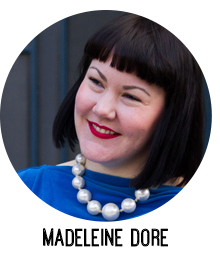
The nature of my interview project Extraordinary Routines has allowed my Instagram network to grow quite quickly. While a complete bonus, it’s helped to have interviewees with large followings share snippets of the interview and praise the project on their profile.
That said, people are discerning and won’t necessarily follow you on Instagram simply because someone has shared your work. You need to capture their attention when they click through to your profile – make it is as easy as possible for them to identify what you are about, and determine if your aesthetic is for them. From the beginning, I tried to keep the overall look of my feed consistent, quirky, and colourful. My profile description and icon clearly communicate my focus on creative’s routines, a topic that seems to create intrigue. Some Instagrammers who do this well include @oakandink, @chiliphilly and @socalitybarbie.
For me, the offline network I have grown through Instagram has been more fulfilling than seeing the number of followers grow. I was recently out to dinner and I looked at the friendly faces at the table and realised I had met them all through Instagram. I’ve made some beautiful friendships, and it’s as simple as telling people you admire their work, and once you have built some rapport, suggest coffee or brunch. I’ve even nabbed some dates that way! But romance aside, my favourite social media tip is to be social!
– – –
Thank you ladies for providing your tried and tested tips for growing your brand on Instagram. Title image by Eclectic Creative (@jess_eclecticcreative) from Instagram.
Andrea McArthur (www.andyjane.com) has a passion for all things visual and works as an Art Director and Freelance Designer based in Brisbane. Design is her true love and she goes weak at the knees over strategic branding. You’ll find her sharing on Instagram @andyjanemc.
My Advice: Adding Value
 By Andrea McArthur
By Andrea McArthur
How to define value and add value to your product or creative service for customers and clients.
It's a big question but one that can create a spark! I've always found that clients and customers are always happiest when they have their expectations met and exceeded. For me (being in design) it's really important to fulfil and exceed clients expectations it's what can set me apart from other designers.
Small business tweaks can pay off! It's the small details which manifest as your brand which show your worth. Showing that you care about your brand, your service and your presentation are all important details. When you strive for excellence - clients will see the additional value in your business.
But the best and truest form of value-add that I've seen in practice is showing that you understand your client's business and their needs. Clients are open to receiving recommendations. By going a step further and exploring tailored options you will blow their mind, add value and possibly have more work. Creative solutions show value and keeps clients coming back for more!
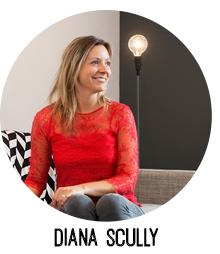
Diana Scully, Principal (Interior) Designer www.spacesbydiana.com.au // Blog www.spacesandplacesblog.com
Working in a service based industry, adding value to what I offer comes down to my relationships with clients and therefore can be different for each project I work on. For me, its about understanding what's important to my client, then going the extra mile to deliver it. This may seem obvious, but for me, it about supporting my client through the process in a way that best suits their needs.
For potential new clients I have set up a lifestyle blog Spaces and Places where I discuss topics of interests relating to interior design. Sometimes its about understanding how certain pieces of furniture can work in your home, where to go shopping or breaking down the process of design so that readers understand how to apply the idea into their own home. I've even set up a Handbook page which has a list of showrooms and stores I usually visit for client projects! I hope that by sharing my knowledge and experiences with the community, they receive a benefit from my services, even before they have engaged me.
Without a doubt, adding value to my business means improving customer service, as I've learnt, people are predominately emotional beings when it comes to their home. They are greatly impacted by warmth, friendliness, being helpful and supportive. This may sound simple, but to me, this is a crucial aspect of adding value when you work in a service based industry. A positive attitude and level of enthusiasm towards a project is what can distinguish your service from the next, especially if you're working in an industry where there's plenty of competition! I find that offering to manage aspects of the project like collect/return samples, process orders or make myself contactable, even after hours, are just a few little ways I can make the process more convenient and rewarding for my client.
 Steph Parsons and Micaela Cleave, Two of a Kind Events
www.two-ofakind.com // Instagram @two_ofakindevents
Steph Parsons and Micaela Cleave, Two of a Kind Events
www.two-ofakind.com // Instagram @two_ofakindevents
As we are still a young business (only a year and a half old) we are constantly asking ourselves how we can define the value we offer to our clients. As cliched as it sounds, so far it really has been a process of finding what works for us through a lot of trial and error. Event styling itself is sometimes a hard concept to define, with our clients often expecting a concrete product for their money.
Recently we have introduced a clear step-by-step process for each of our service pathways which our clients receive when they book with us. This acts as a reference point for them to see which stage of the event design process we are up to at any given time. We've found this to be really helpful with managing a client's expectations and ultimately allowing us to exceed those expectations.
We also think it's really important to be our authentic selves in all aspects of our business. This of course impacts the relationships we form with our clients, and is something that we can offer them that no one else can. We are our product, and staying true to that has allowed us to connect with like minded people who have ended up becoming friends along the way.
{Image by Geelong Advertiser}
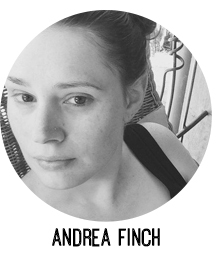 Andrea Finch, Graphic Designer & Virtual Assistant
www.andreafinch.com.au // Twitter @andreafinch_
Andrea Finch, Graphic Designer & Virtual Assistant
www.andreafinch.com.au // Twitter @andreafinch_
I'm great at delivering exactly what I promise, when I promise. My clients are always impressed with what I have to offer. But I can do more by going the extra mile.
Here are three things that I do to add value that you might also find helpful.
Creativity. When I'm designing a logo for a client, I go the extra mile and also save it out at the right size for their profile picture for their Facebook business page. This might seem little but it creates a big impact on the client. I try to be creative and think of something small that I can include to delight my clients.
Professional Advice. As a supplier, I have the chance to offer a professional perspective on a clients’ business. My advice can help take them to the next critical step in growing their business (winner!). Professional advice could play a huge role in highlighting issues a client may not have yet considered, and if that input can help them reach big results, then the added value will be appreciated.
Communication. I’m a strong believer that you can’t do business without communication. It is the key ingredient to running a successful business. Ensuring I keep clients up to date with where I am at with their project (even if they don’t ask) is not only good work ethic but it tends to give me brownie points when you’re keeping them in the loop.
– – –
Thanks ladies for opening up and explaining some of your processes that work to add value in your creative businesses.
Andrea McArthur (www.andyjane.com) has a passion for all things visual and works as an Art Director and Designer for the Brisbane Festival. Design is her true love and she goes weak at the knees over strategic branding. You’ll find her sharing on Instagram @andyjanemc.
My Advice: Photography Tips
Human beings thrive on the visual, especially those who consider themselves creative. The online world reflects this - today our businesses and creative output is supported by image-heavy blogs, websites, and social media feeds which make it important to represent yourself and your imagery in the best possible way.
This month, I asked three professional photographers for their tips to improve the result when you're tasked with presenting your products or work in the best possible light.
Karina Sharpe, Conceptual Artist and Product Photographer www.karinasharpe.com.au // Instagram // @karina_jean_sharpe
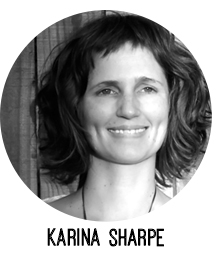
Imagery is big these days, and high calibre imagery has become both the norm and the expectation. I teach a lot of people how to take good photos more effortlessly - and less by accident - in my Benchtop Photography workshops. These are the three tips that people seem to find of most value.
1. The direction of LIGHT, in relation to an object’s position and orientation, can be the single most transformational element of your photographs. This is because objects have a form that will show itself differently depending on how its surfaces are lit up. Begin to notice the light around you and where it is coming from. Try and set your arrangements up on something that you can spin around in relation to the light source. Then, play with how the light falls onto, and across, your objects. Observe what gives the most captivating result.
2. SHADOWS are definitely not your enemy. In most situations we want to engage with our audience on an emotional level, and shadows provide depth, tangibility, realism and substance. However, we want to try and avoid the shadow of one object falling across another object, so become aware and move your objects if shadows are falling in an unfriendly manner. Also, try to avoid double shadows. If you notice this is happening, try to eliminate any extra light sources.
3. Creative use of BACKDROPS allows our images to standout, be recognisable, and build consistency for our brand. Coloured paper or cardboard are easy options, and things like tiles, fabric, flooring offcuts and fake timbers & textures give even more scope. Choose surfaces with your brand’s ethos in mind; timber is not just timber – white-washed might look refined and adventure-y, whereas a dark rough grain would be more earthy and homespun. Ask yourself, which timber am I?
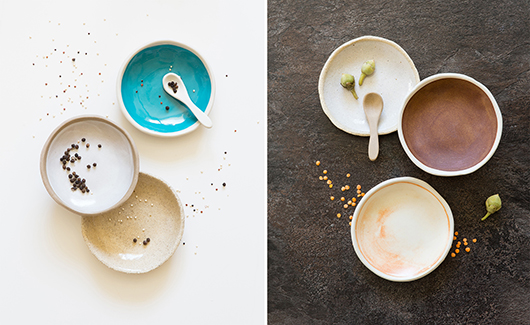
Jessica K Reftel Evans, Photographer www.amorfo.net // Instagram // @amorfophotography
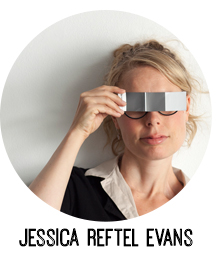
Before setting out on taking your images it's a massive time saver to work out clear visual objectives. Storyboard what it is that you're trying to achieve; a colour palette/mood-board and if you want these images to be more editorial/environmental or clean/factual. Take these thoughts with you as you prepare the shoot with backgrounds and props. Keeping the styling consistent is the key.
To display most products honestly and flatteringly I would suggest using a soft light source. If you don't have special lights you can use a window. Avoid direct sunlight and diffuse the light with a photographic scrim or thin white fabric. If the shadows are too heavy use a white card or another piece of white fabric on the shadow side of your product. Also, turn off your roof lights since they might change the colour temperature and light of your image. The colour of daylight changes throughout the day. So to make sure that your images have consistent and accurate colour representation use white balance settings. This can be done either on your camera or in your image processing software.
And remember, you might not get the perfect image the first time. So just practice, experiment and most importantly have fun. Happy shooting!
Hannah Rose Robinson, photographer www.hannahrose.com.au // Instagram // @hannah_rose_robinson
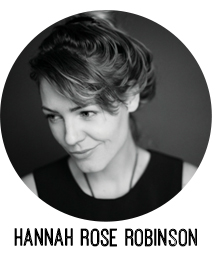
Tell a story. In today's world we are so bombarded with images everywhere we turn that it's hard to stand out. A visual identity is so important - carving out a style that is unique and becomes a recognisable brand, they tell a story through all the elements involved. Photography is just one element of that but an important one. Use imagery that tells a story, or evokes an emotional response. Put multiple images together to create a mood, or piece together a narrative. Write something to accompany the image/s, tell a story. I want to know what people are about, how they feel, their views on the world. Show your process. This is engaging and people like to be invited into the intimate space you can create with images and words. No matter what the subject matter, food, products, people, how can they be a story. What else is in the picture, what else can help tell my narrative.
Be unique. We are all guilty of scrolling Instagram or a favourite blog and getting tunnel vision on someone else's style when we see an image we fall in love with. Try not to get lost in this. I like to see people be different from the masses, find their own vision. There will always be trends that will come and go, but if you spend some time looking deep and hard on what your core vision and personal brand message is, you should be able to start carving out your own style. Be inspired by the images you like, but don't look to be a copy. Look to what the elements are that you like in those images (maybe it's the light or tone or mood) and be inspired by them to create your own unique look.
Switch off. The online world that we are all so intrinsically plugged into these days is immense. It takes up a lot of our time, we devote it our time, and it demands our time. Our technology and online lives are so ingrained in our experiences these days that it frankly makes my head ache. So my big tip is to switch off. Every now and then just switch it all off. Don't take a picture, don't blog, don't scroll. Go do the things you love to blog about and reconnect with them on a fully present scale. It's easy to miss the essence of a moment, lose sight of the essence of your work- whilst being lost in how to capture and share it. Every now and then, switch off and revaluate the process. Go climb a mountain purely to feel the joy in the ache of your legs, to feel the air sweetly fill your lungs, to drink in that view from the top, be fully present. Don't take a picture. Make a memory, and keep it for yourself. Put them in your bank to inspire you. It reboots your brain, and will only mean great things for all your creative endeavours.
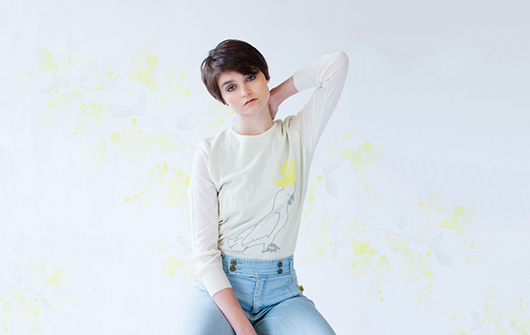

- - - Thank you ladies for sharing your photography tips. I am definitely going to have a play with my camera soon!
{Title image by Karina Sharpe}
Andrea McArthur (www.andyjane.com) has a passion for all things visual and works as an Art Director and Designer for the Brisbane Festival. Design is her true love and she goes weak at the knees over strategic branding. You’ll find her sharing on Instagram @andyjanemc.
My Advice: Conquering creative doubt
By Andrea McArthur
 Have you experienced the voice that creeps in – asking you: What if? What if it doesn't work out, what if people don't like what I've done, what if this is less than perfect? But what if you could be more courageous and positive, then you could accomplish your goals, be happier and even more creative. Today, we ask three CWC Members for their advice when it comes to conquering doubt in your creative work, projects and life.
Have you experienced the voice that creeps in – asking you: What if? What if it doesn't work out, what if people don't like what I've done, what if this is less than perfect? But what if you could be more courageous and positive, then you could accomplish your goals, be happier and even more creative. Today, we ask three CWC Members for their advice when it comes to conquering doubt in your creative work, projects and life.
Kate James, Career and Life Coach, Total Balance

Every creative person I’ve ever worked with has told me they experience days filled with self-doubt. Ironically, it’s often the people with exceptional talent who are afflicted most.
When you’re going through a patch of creative doubt, it’s important to remember that you’re not alone, it’s completely normal and it does pass. You just need to make sure it doesn’t become an excuse to sabotage your practice or give up on your dreams. Try these tips to help you over a creative hump.
Make space in your life Sometimes this is easier said than done, particularly if you’re balancing parenting with work. If possible, clear your diary for a day and give yourself time to rest and to breathe. Revisit your ‘to do’ list to work out your real priorities and give yourself time to recharge. A little bit of rest will do wonders for your creativity.
Move your body, get into nature Get away from your desk, your computer or your studio and out into nature. Take a walk, go for a swim or just lie on the grass and look up at the trees. Let your mind move away from your creative challenges and as best you can, be completely in the moment.
Stop comparing yourself It’s not helpful to look through Instagram and compare your life with the lives of others. It may look like people are doing way more interesting things than you but remember, even those who look enormously happy and successful from the outside have days of self-doubt too.
Keep at it Once you’ve given yourself some breathing space, get back to your craft as quickly as you can. Break your bigger goals into manageable little chunks so you can tick one thing off your list today. This will feel like an achievement in itself.
Don't let self-belief come second Self-belief is a by-product of behaviour, which means you don’t need to wait until you’re confident to do something that takes you out of your comfort zone - just keep doing and the confidence will eventually come.
Elizabeth Geddes, Creative Director and Copywriter, Chops for Tea

There's always an answer, and often it's right there in the [project] brief.
Perhaps your doubt comes from the feeling of wandering aimlessly with no direction because the brief is non-existent, woolly or too generic. A good brief gives you boundaries, a measuring stick and finish line all in one. When starting a project, at the very minimum get your brief in writing in an email from your client. Or, after a conversation, write the brief yourself, email it to the client and get them to acknowledge it. With a brief you can prove you have answered what the client has asked for. Plus, if you have no written contract with your client then the brief is justification for getting paid.
As for how creative the solution is depends on the creativity, aesthetics and bravery of you, the client, and people higher up the client's chain of command. Always make sure that the person giving the final approval has signed off on the brief (and the costs!) before you even start.
I'm about the idea first, execution second. You can put lipstick on a pig but that's not fooling anyone. So here's the crux: and it's something I heard Siimon Reynolds say on one of those Andrew Denton TV shows in the 80s. Siimon was a creative director (famously of Grey at only 21) and so dealt in advertising concepts. For a brief he would exhaust his well of ideas — say 100+ concepts. Then he'd dig some more. It's about getting all the expected stuff out of your head first so it doesn't rattle around, and allows the more obscure stuff to be mined.
Another thing Siimon said was use a dictionary (or any book really). Open a page, randomly take a word and build an appropriate concept around it. I still do this to this day. My favourite projects are naming jobs. A combination of the Macquarie dictionary, Roget's thesaurus, serendipity and diving head first down rabbit holes from the Google search results page always gets me the right answer, and the confidence I need to quash any doubts that I'm not on the right track.
Kate Taylor, Business Owner and Creator, Taylor and Cloth

Just create!
I find the best way to conquer creative doubt is to just create! I know that not everything I make will be good enough to blog about or sell, but that's not what it's about for me anyway. I love making things and using my creative brain. I enjoy actively trying to come up with ideas and then taking the time to nut them out. If the ideas work and I'm happy with the outcome, then great! If not, but I really want the idea to work, I'll talk to my Mum. She’s an old school maker! She crochets like a demon and we both get seriously excited about craft. So if the idea is good but it's not working out like I hoped, talking about it with her will always lead to an outcome, either we find a solution, create a better idea or we leave it! In which case I just put it away and try not to stress about it.
All creative ideas are relevant and more often than not they lead to others. For me its about the ideas that come while you are busy working on something. It can start off as one thing and then you have an idea that takes you in completely different direction and you love that idea so much more than the first.
To break it down my advice for conquering creative doubt is as follows:
1. The best way to conquer creative doubt is to just create! 2. Don't worry about the outcome, focus on the creative journey and watch one idea turn into more. 3. Surround yourself with creative people or find a creative person you can bounce ideas off. 4. Its ok to get feedback (read: personal cheer squad) as long as deep down you are happy with what you have created. 5. Make creating the goal rather than focusing on the outcome. 6. Above all, don’t forget to have fun.
- - -
Thank you ladies for sharing your own experiences and tips for conquering creative self-doubt.
Andrea McArthur (www.andyjane.com) has a passion for all things visual and works as an Art Director and Designer for the Brisbane Festival. Design is her true love and she goes weak at the knees over strategic branding. You’ll find her sharing on Instagram @andyjanemc.
My Advice: The biggest lesson from 2014…
Now that we are well into 2015, I thought I'd ask three creatives - Heleena Arabatzis, Textile Print Artist of Ulterior Motif; Bec Mutch, Coworking space founder of The Cowork Collective; and Ilona Topolcsanyi, Ceramic Artist of Cone 11 - for their ultiamte piece of business advice based on what they experienced and learned in 2014.
Heleena Arabatzis, textile print artist, Ulterior Motif
 Upon reflection, 2014 was certainly a lesson-filled year. My top lesson learned was one surrounding ‘working life’. Like most creative’s starting out, the path is pebbled usually in the same pattern: graduate, intern, full time gig, do what you really love on the side, juggle both roles, hope that your talents are taken seriously enough you can ditch the 'PAYG job' and focus on the 'love job' for the rest of your days.
Upon reflection, 2014 was certainly a lesson-filled year. My top lesson learned was one surrounding ‘working life’. Like most creative’s starting out, the path is pebbled usually in the same pattern: graduate, intern, full time gig, do what you really love on the side, juggle both roles, hope that your talents are taken seriously enough you can ditch the 'PAYG job' and focus on the 'love job' for the rest of your days.
Finding the core thing that I actually wanted to do for the rest of my life, and realising that I wasn’t fit for the ‘common’ path was simultaneously liberating & daunting… as was revealing this to my family, partner & boss.
[I surmised] my career intents are not based on world domination, the masses, the high-rise climb, the trends etc, [and this] manifested an honest search for answers to restore feeling where numbness unwilling resided. After several quiet moments, I effortlessly refined it to three elements: Motherhood, Travel and Creation. The first two are still works in progress but getting back to practising the act & art of creating happened to be a swifter one. I left my textile art-room assistant PAYG job to jet off. As a way of procuring extra savings, I went to market with my Ulterior Motif designs, all made as part my graduation showcase. To my complete amazement, Ulterior Motif products were ver well received by local audiences! It truly is the height of satisfaction interacting with others and just exploring an artistic spin on the world (even if it is just displayed on a cushion). [This experience] has ultimately grounded my feet… for now…
Finally, with a new found view on (working) life, I plan on having the most fruitful creative year in 2015!
Bec Mutch, founder of The Cowork Collective

It’s funny, when you start something new, naivety can be your greatest friend. That boundless positivity it delivers, helping you block out all the naysayers, gloss over the doubts and the voices in your head that whisper of disaster. Without it I’m not sure many of us would launch new projects at all. And so we start, we plan and take steps and commit, and our positivity and naivety feeding us along the way.
At some point though our vision generally gets a battering, and we are faced with a reality that we may not like and a choice to give up or keep going. I distinctly remember sitting alone at 421 Lygon St on a day when I thought we might need to give up the lease and walk away. I was filled with anger and frustration that my grand vision [of a unique coworking space] was imploding. I wondered what I’d do next if it did all fall apart, and knew that nothing had changed. I still wanted to create a space that felt positive, inspiring and supportive that blended together the best elements of working from home, a corporate office and a creative studio.
So I kept going, and my family and friends kept offering their support, and I began meeting amazing people whose ideas and encouragement gave me reasons to believe it might all be worth it. The doors opened on December 1st 2014, six months after the lease was signed and the renovation budget had tripled. Although there were times when the adventure felt like a relentless chore, I still knew I wouldn’t want to be doing anything else. Giving myself permission to do something I really wanted to do was one thing. Sticking with it when things got ugly was a revelation. Now I want to shout from the rooftops that it’s so worth it. That even though the roadblocks and challenges along the way may leave you drowning in waves of doubt, if you keep going you’ll end up in a place far better than the one you first imagined.
If you’ve got the dream, you’ve got what it takes to bring it to life. Just keep going…
Ilona Topolcsanyi, Ceramic Artist of Cone 11

For Cone 11 ceramics, 2014 was a year of great beginnings as we developed relationships with some of Australia’s most passionate and renowned chefs. Early in the year we were asked to make an exclusive collection of one-off plates for the Harvest Festival curated by The Gallery of Modern Art, where top chefs including Peter Gilmore, Josh Lopez, James Viles, Dan Hunter and Ryan Squires used our tableware to plate up their amazing creations. From this arose a series of major collaborations that would see us developing tableware for restaurants across Australia. The most significant of these (I’m chuffed to say…) was the making of 250 pieces for the G20 working party dinner at the Gallery Of Modern Art in QLD. Yes - Barack Obama himself has eaten dinner off my plate!
It was an exciting and prosperous year for us and many of these projects are gently flowing on into 2015. With the excitement of these commissions comes a little stress, a lot of hard work, many failures but an even greater number of successes with many valuable lessons learnt along the way. The most important for me were learning about setting some limits, knowing when to say 'no', understanding my boundaries and estimating how much work can realistically be taken on without burning out. Above all I developed a new appreciation for leaving time for a little personal creative play – keeping myself in touch with the love of what I do and the passion that drove me into this creative practice in the first place.
- - -
Andrea McArthur (www.andyjane.com) has a passion for all things visual and works as an Art Director and Designer in Brisbane. Type is her true love and goes weak at the knees over strategic design. You’ll find her sharing on Instagram @andyjanemc.






